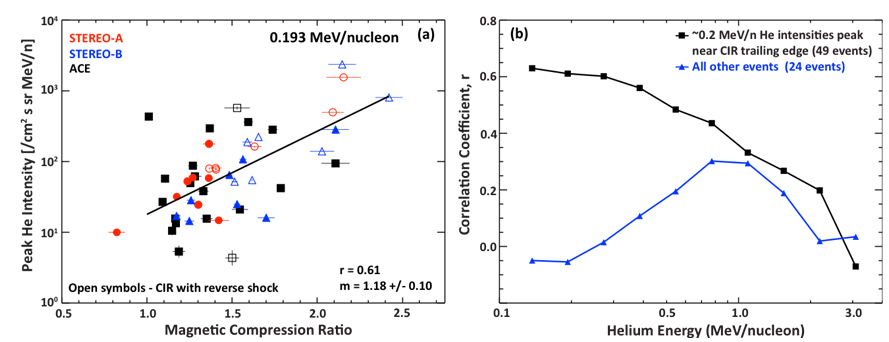
Fig 1: (a) ~0.2 MeV/n He peak intensity (JHe) vs magnetic compression ratio
(M) in CIRs where the He time intensity profiles peak within ~7 hours of the
trailing edge. Black curve: linear fit; m = slope; r = correlation
coefficient. (b) Correlation between peak JHe and M vs. He energy. Black
curve: CIRs where ~0.2 MeV/n He intensity peaks near trailing edge. Blue
curve: all other events.
Corotating interaction regions (CIRs) form when a stream of fast solar wind
overtakes a parcel of slow wind that was emitted from the Sun at an earlier
time. This interaction creates a compression region that corotates with the
Sun and can strengthen to form shocks that accelerate particles. CIRs are the
primary producer of the tens of keV/n to several MeV/n particles measured at 1
AU during periods of low solar activity. The common interpretation is that
these enhancements arise from the sunward propagation of particles accelerated
at CIR-driven shocks between ~2 to 5 AU; these particles lose energy and are
scattered as they travel inward against the outward flowing solar wind
resulting in a turnover in their energy spectrum below ~0.5 MeV/n (e.g., Fisk
& Lee, 1980). This interpretation has accounted for a number of CIR particle
event features, including the large intensity gradients in the inner
heliosphere and the exponentially decaying spectral profiles, the primary
exception being the spectral profiles at 1 AU where the predicted turnover at
lower energies is generally not seen (see Richardson 2004). This has led many
to speculate that the lower energy, or suprathermal, CIR-associated particles
at 1 AU are accelerated more locally.
We have investigated this topic by examining 1-hour averaged energetic
particle observations from ACE/ULEIS and the SIT instruments on STEREO-A and
STEREO-B during 73 CIR-associated suprathermal helium (He) intensity
enhancements at 1 AU. A large number of these events had their ~0.2 MeV/n He
time intensity profiles peak at or near the trailing edge of the CIR
compression region, roughly two thirds of these profiles peaking within ~7
hours of this boundary. We identified a strong correlation between the ~0.2
MeV/n He peak intensities and magnetic compression ratios at the trailing edge
within these events (Fig 1a), establishing the trailing edge as a possible
site where CIR-associated particles can be accelerated to suprathermal
energies near 1 AU. Events where the ~0.2 MeV/n He intensities peaked beyond
the ~7 hour threshold showed a weaker correlation between these parameters.
Our results also show an energy dependence for this relation, the correlation
falling off at > 0.8 MeV/n (Fig 1b). This provides an upper limit for the
particle energies that can be reached via local acceleration at 1 AU; the
compressions at 1 AU do not appear to be strong enough to accelerate particles
to energies above ~1 MeV/n. For additional details, see Ebert et al., ApJ,
749, 73, 2012.
This item was contributed by
Robert W. Ebert, Maher A. Dayeh, and Mihir I. Desai of the
Southwest Research Institute, and Glenn M. Mason of the Johns Hopkins
University Applied Physics Laboratory.
Address questions and comments to
ACE News Archives
Subscribe to ACE News
ACE Homepage
Last modified 18 Dec 2012.